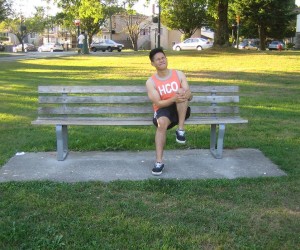The knee is basically a hinge joint that is formed by the shin bone and thigh bone. These bones are linked together and held in place by cartilage to help hold the knee in its proper place. There are two padding of cartilage in between the two bones that are called as the medial and lateral meniscus which function as shock absorbers to prevent rubbing of the bones as well as facilitate smooth movement of the knee. Over time, the cartilage starts to deteriorate, thus resulting to pain and limited knee movement.
Facts on degenerative meniscus
As an individual starts to age and the cartilage wears out from supporting the body weight, it begins to weaken and thins out. Certain conditions such as arthritis and other joint diseases can cause the wearing out of the meniscus, resulting to weakening of the overall knee structure. This can increase the risk for tears that entail treatment or even surgery to repair.
The typical cause of a sports-related meniscus tear is a direct blow on the exterior of the knee. On the other hand, one can damage a deteriorated meniscus while engaging in daily activities since the cartilage is already weakened.

What is happening inside the knee?
Degenerative meniscus develops as a normal part of the aging process due to the deterioration of the collagen fibers that provide cushion in between the thigh and the shin bone.
The breakdown weakens the support provided to the knee, thus increasing the risk for tearing the meniscus. The tears that occur due to deterioration of the meniscus instead of trauma typically occur in a horizontal manner. The horizontal tear can cause the affected knee to “catch” or “lock”.
What are the signs and symptoms?
An individual can develop degenerative meniscus and not even aware of it until the cartilage eventually tears. It is important to note that the degeneration is an outcome of years of high-impact activity or the normal wear and tear over time, but the weakening causes the cartilage to tear apart.
The tearing can result to pain, difficulty moving the knee, feeling of weakness in the knee and inability to move the knee as easily as before. Issues with the knee that cause any of these symptoms require immediate assessment by a doctor.
Management
An individual with a torn meniscus might undergo surgery whether it is due to a degenerative condition or traumatic injury. Whether the individual requires surgery, it usually depends on the activity level, age and type and degree of tear sustained.
In case the condition does not require surgery, it is usually managed with anti-inflammatory medications along with the RICE method (rest, ice, compression and elevation). In case the cartilage degenerated to a point in which these treatments are not effective, the doctor might recommend knee arthroscopy to repair or replace the damaged cartilage.
